1. Altieri DC. New wirings in the survivin networks. Oncogene. 2008; 27:6276–6284. PMID:
18931693.

2. Andersen MH, thor SP. Survivin-a universal tumor antigen. Histol Histopathol. 2002; 17:669–675. PMID:
11962766.
3. Zangemeister Wittke U, Simon HU. An IAP in action: the multiple roles of survivin in differentiation, immunity and malignancy. Cell Cycle. 2004; 3:1121–1123. PMID:
15326382.

4. Watson AJ. An overview of apoptosis and the prevention of colorectal cancer. Crit Rev Oncol Hematol. 2006; 57:107–121. PMID:
16326109.

5. Cosgrave N, Hill AD, Young LS. Growth factor-dependent regulation of survivin by c-myc in human breast cancer. J Mol Endocrinol. 2006; 37:377–390. PMID:
17170079.

6. McCubrey JA, Steelman LS, Franklin RA, Abrams SL, Chappell WH, Wong EW, et al. Targeting the RAF/MEK/ERK, PI3K/AKT and P53 pathways in hematopoietic drug resistance. Adv Enzyme Regul. 2007; 47:64–103. PMID:
17382374.

7. Arango D, Mariadason JM, Wilson AJ, Yang W, Corner GA, Nichololas C, et al. c-Myc overexpression sensitises colon cancer cells to camptothecin-induced apoptosis. Br J Cancer. 2003; 89:1757–1765. PMID:
14583781.

8. Nabilsi NH, Broaddus RR, Loose DS. DNA methylation inhibits p53-mediated survivin repression. Oncogene. 2009; 28:2046–2050. PMID:
19363521.

9. Wang JC, Dick JE. Cancer stem cells: lessons from leukemia. Trends Cell Biol. 2005; 15:494–501. PMID:
16084092.

10. Seoane J, Le HV, Massague J. Myc suppression of p21 Cdk inhibitor influences the outcome of the p53 response to DNA damage. Nature. 2002; 419:729–734. PMID:
12384701.
11. Bapat SA, Mali AM, Koppikar CB, Kurrry NK. Stem and progenitor-like cells contribute to the aggressive behavior of human epithelial ovarian cancer. Cancer Res. 2005; 65:3025–3029. PMID:
15833827.

12. Zuk PA, Zhu M, Mizuno H, Huang J, Futrell JW, Katz AJ, et al. Multilineage cells from human adipose tissue: implications for cell-based therapies. Tissue Eng. 2001; 7:211–228. PMID:
11304456.

13. Brzoska M, Geiger H, Gauer S, Baer P. Epithelial differentiation of human adipose tissue-derived adult stem cells. Biochem Biophys Res Commun. 2005; 330:142–150. PMID:
15781243.

14. Hoffman WH, Biade S, Zilfou JT, Chen J, Murphy M. Transcriptional repression of the antiapoptotic survivin gene by wild type p53. J Biol Chem. 2002; 277:3247–3257. PMID:
11714700.
15. Sommer KW, Schamberger CJ, Schmidt GE, Sasgary S, Cerni C. Inhibitor of apoptosis protein (IAP) survivin is upregulated by oncogenic c-H-Ras. Oncogene. 2003; 22:4266–4280. PMID:
12833149.

16. Calabrese P, Tavare S, Shibata D. Pretumor progression: clonal evolution of human stem cell populations. Am J Pathol. 2004; 164:1337–1346. PMID:
15039221.
17. Costa FF, Le Blanc K, Brodin B. Concise review: cancer/testis antigen, stem cells, and cancer. Stem Cells. 2007; 25:707–711. PMID:
17138959.
18. Fukuda S, Pelus LM. Survivin, a cancer target with an emerging role in normal adult tissues. Mol Cancer Ther. 2006; 5:1087–1098. PMID:
16731740.

19. Fukuda S, Pelus LM. Elevation of survivin levels by hematopoietic growth factors occurs in quiescent CD34+ hematopoietic stem and progenitor cells before cell cycle entry. Cell Cycle. 2002; 1:322–326. PMID:
12461294.

20. Wachsman JT. DNA methylation and the association between genetic and epigenetic changes: relation to carcinogenesis. Mutat Res. 1997; 375:1–8. PMID:
9129674.

21. Simonsson S, Gurdon J. DNA demethylation is necessary for the epigenetic reprogramming of somatic cell nuclei. Nat Cell Biol. 2004; 6:984–990. PMID:
15448701.

22. Momparler RL, Bovenzi V. DNA methylation and cancer. J Cell Physiol. 2000; 183:145–154. PMID:
10737890.

23. Hattori M, Sakamoto H, Satoh K, Yamamoto T. DNA demethylase is expressed in ovarian cancers and the expression correlates with demethylation of CpG sites in the promoter region of c-erbB-2 and survivin genes. Cancer Lett. 2001; 169:155–164. PMID:
11431104.

24. Carter BZ, Milella M, Altieri DC, Andreeff M. Cytokine-regulated expression of survivin in myeloid leukemia. Blood. 2001; 97:2784–2790. PMID:
11313272.
25. Yuan J, Yang BM, Zhong ZH, Shats I, Milyavsky M, Rotter V, et al. Upregulation of survivin during immortalization of nontransformed human fibroblasts transduced with telomerase reverse transcriptase. Oncogene. 2009; 28:2678–2689. PMID:
19483728.

26. Filion TM, Qiao M, Ghule PN, Mandeville M, van Wijnen AJ, Stein JL, et al. Survival responses of human embryonic stem cells to DNA damage. J Cell Physiol. 2009; 220:586–592. PMID:
19373864.

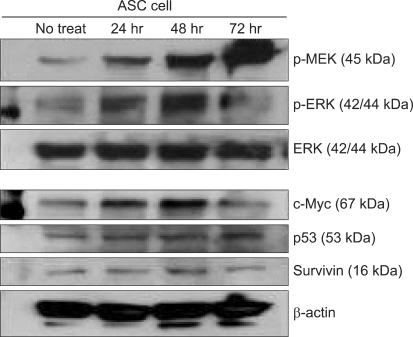
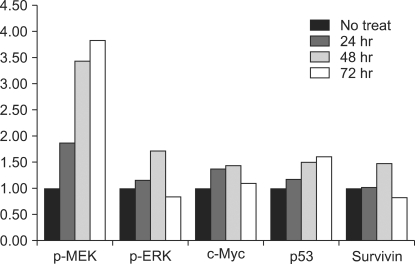
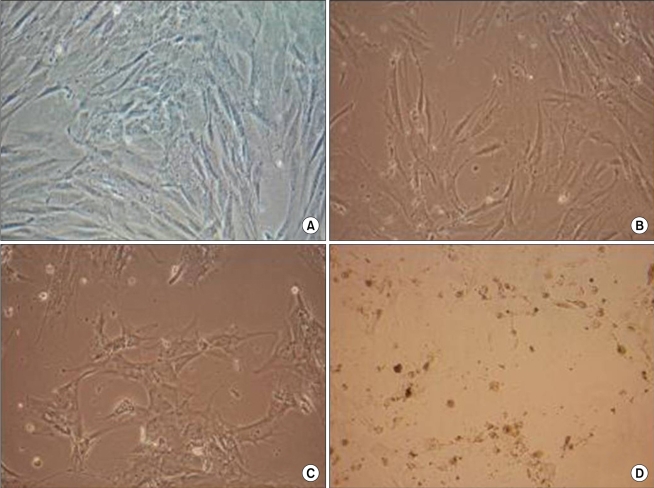




 PDF
PDF Citation
Citation Print
Print



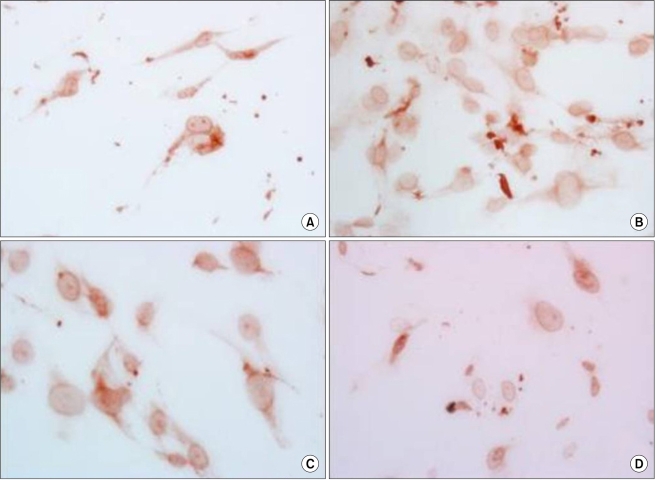
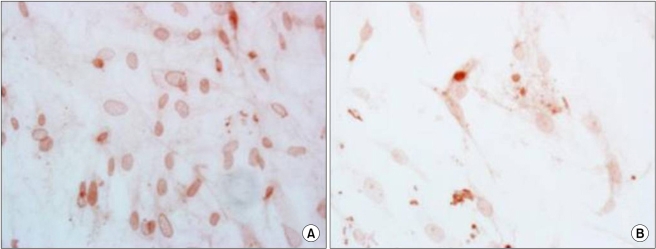
 XML Download
XML Download